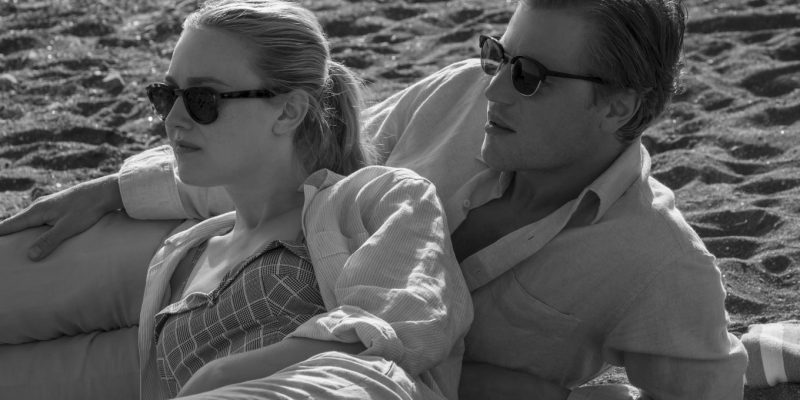Trends
Why Fashion Brands Are Celebrating Women’s Breasts in Their Designs
A rise in body positivity and size diversity is creating a chest-forward fashion movement.
by : Caitlin Agnew- Feb 24th, 2022
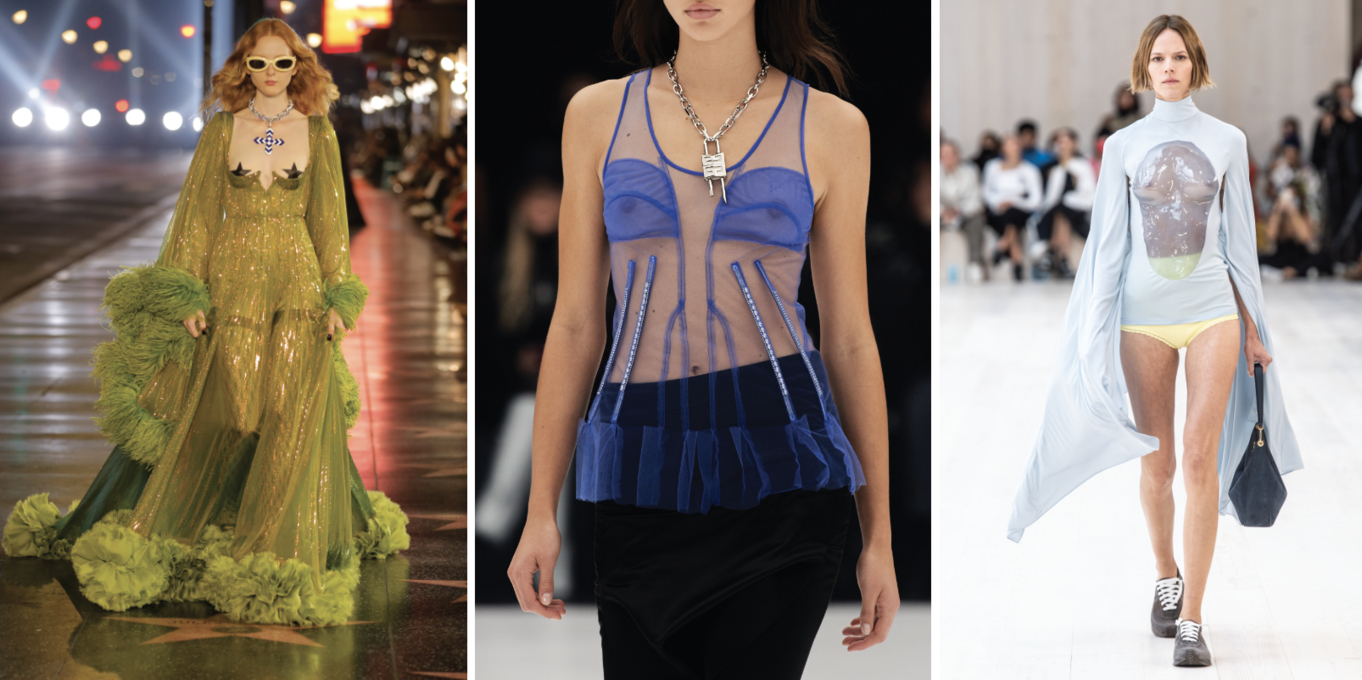
Courtesy of Imaxtree
When Justin Timberlake ripped off a piece of Janet Jackson’s top at the 2004 Super Bowl, it was a “wardrobe malfunction” heard around the world—a controversial nip slip that’s still reverberating to this day via the 2021 docuseries Malfunction: The Dressing Down of Janet Jackson. Of all the body parts, none has the power to captivate attention quite like the breast. As a motif in fashion, art and design, it’s loaded with meaning. In 2022, the breast has become a symbol of body positivity and celebration.
“We all have a huge fascination with bodies, especially now,” says Sashagai Ruddock, a Toronto-based content creator and designer of fashion label Flaws of Couture, which offers sizing from small to 5X. “Over the past 10 years, we’ve all been super focused on perfection or imperfection—whatever that means. I don’t really subscribe to the idea that we’re imperfect in any way.” That focus has cropped up on spring runways, where breasts have come to symbolize that ongoing conversation about our bodies. Schiaparelli’s signature Surrealist approach included metallic breastplates, bras with circus-like swirls and jackets with gold nipples and soft-pink rosettes that cascaded down into floor-grazing drapes. At Prada in Milan, the linear line of a chunky-knit sweater was interrupted by the curvy outline of the lower bust, while over on Hollywood Boulevard, Gucci creative director Alessandro Michele added bustier detailing to dresses. In London, Simone Rocha’s ethereal collection included a deranged negligee inspired by motherhood. “I also made a lot of dresses that open at the front and back, which you do need when you’re nursing,” she told Vogue.com. “I wanted to support the breasts with corseting and release the hips.”
These designs have quickly become celebrity favourites. Zendaya wore a gold Loewe breastplate to the Women in Film Honors at the Academy Museum of Motion Pictures in October last year, and in early 2020, the Dune star wore a fuchsia Tom Ford breastplate to the Critics Choice Awards—one that was also worn by Gwyneth Paltrow on the February 2020 cover of Harper’s Bazaar. And in the video for Lizzo’s hit single “Rumors,” released last August, Cardi B sported a gold breastplate commissioned by stylist Kollin Carter and sculpted by Misha Japanwala, an artist known for creating body casts that are worn as garments.
The breast is also being referenced in design motifs outside of the fashion realm. Known for his titillating sense of humour, American designer Jonathan Adler explores mammary maximalism with his “Georgia Orb” design, part of his Muse Collection of pottery, which references the body parts of famous artists’ muses. For her fragrance debut, Eilish, Billie Eilish decided to house the vanilla-based scent in a metallic bottle shaped like a bust, which she says is her favourite body part. And Swedish design duo Butler Lindgård is well known for its textiles based on the female body, including carpets and fabrics adorned with breasts.
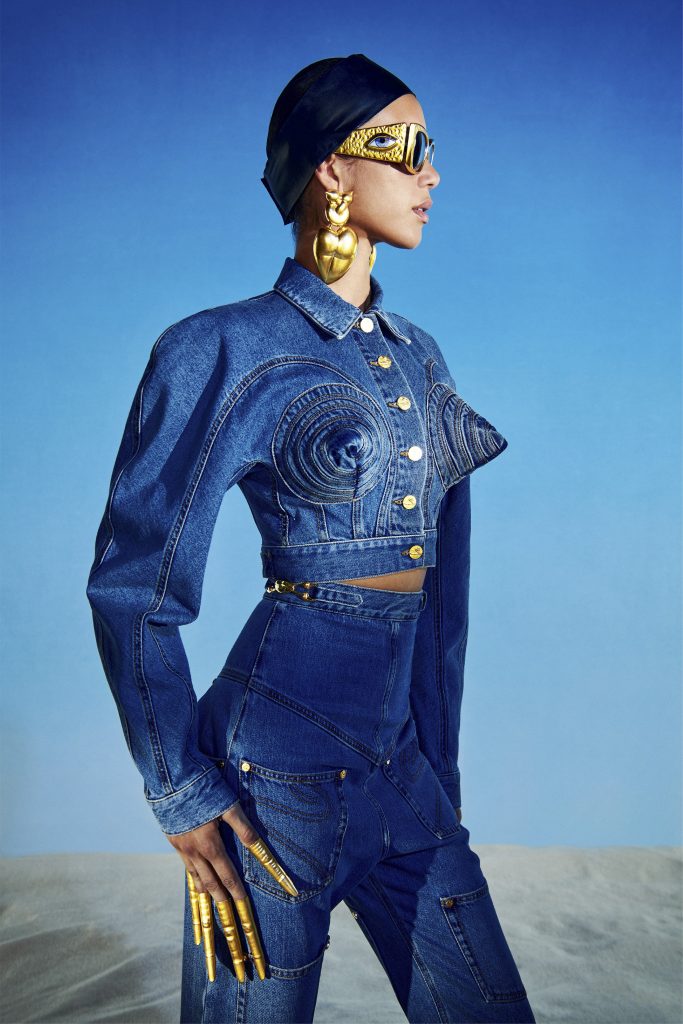 Schiaparelli
Schiaparelli Of course, taking inspiration from the female form in fashion, art and design is nothing new. Consider Jean Paul Gaultier, who famously dressed Madonna in a pink satin cone bra for her Blond Ambition tour in 1990, and Lady Gaga, who shot sparks from a metallic bustier onstage at the MuchMusic Video Awards in 2009. In 2022, however, the mood feels like a departure from the references of yore, where breasts were put on display for erotic admiration or simply for shock value. “[I think that] the breast-forward trend in fashion is [due to] the huge rise in size diversity and body positivity,” says Lauren Chan, an advocate for size inclusivity, a former editor at Glamour and the founder and CEO of luxury womenswear line Henning, which offers sizes 12 to 26. Chan says it’s obvious that the message we’re getting from across the industry is that there’s not just one way to have breasts. “It’s clear to me that the influence comes from the acceptance of what real bodies look like,” she says. “Fashion is typically made for a very straight, very small body, and the clothes are cut that way. Even if you look at someone who is close to sample size in the real world, they often aren’t as straight as a model through the chest or the hips.”
As designers join in with clothing that overtly references our most loaded body parts, they’re encouraging wearers to celebrate their bodies and bid adieu to a one-size-fits-all mindset. “It’s empowering to see shapeliness embraced,” says Chan. Consider the aesthetic of Victoria’s Secret, which dominated North American notions of female beauty until very recently. In the #MeToo era, the brand has effectively been cancelled because of its unrealistic beauty expectations, not to mention former CEO Les Wexner’s close association with Jeffrey Epstein. Stepping into its place is Rihanna’s Savage x Fenty inclusive lingerie line, a refreshing antidote to Victoria’s Secret’s physical homogeneity. Backstage at her show in 2018, Rihanna told The New York Times that her fashion shows represent what she hopes to see in the future: women of all body types, races and cultures being celebrated. “It’s a shame that women have to feel insecure or self-conscious about how their bodies look,” she said.
“As designers join in with clothing that overtly references our most loaded body parts, they're encouraging wearers to celebrate their bodies and bid adieu to a one-size-fits-all mindset. ”
As home to movements like #freethenipple and a space where women can present themselves the way they would like to be seen, social media has no small role in this shift in perception, although women’s bodies are still frequently censored on platforms like Instagram. “As body inclusion, size diversity and body positivity continue to penetrate fashion, women are bucking the [notion that there’s a] single way that a body and specifically breasts are supposed to look,” says Chan. “It’s incredible to see that play out online because we’re getting a taste of what consumers feel and want in real time.”
Ruddock says that it’s about time we had some real, lasting change. “I don’t think it’s a trend,” she says. “I think the reason it can’t be a trend is that social media has really been good in a way when it comes to having activists and influencers and people who just won’t let up when it comes to this conversation. That’s something we didn’t have before social media.” For Chan, the groundswell of this fashion movement signifies progress. “The fact that many people online are not wearing bras or are wearing soft-cup bras or artful breastplates just goes to show how far we’ve come from that singular idea of beauty and a body ideal when it comes to breasts,” she says. And moving forward is certainly worth celebrating.
Read more:
Model Devyn Garcia on Her New Victoria’s Secret Campaign, Being Plus-Size and Using Her Platform
Are We on the Cusp of a Hipster Renaissance?
Why Early 2000s Fashion is Trending (Again)
Newsletter
Join our mailing list for the latest and biggest in fashion trends, beauty, culture and celebrity.
Read Next
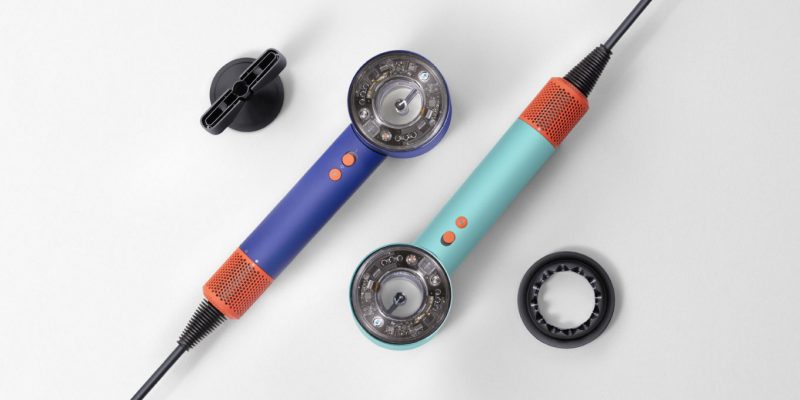
Beauty
Dyson Just Launched Its Most Intelligent Hair Dryer Yet
Get ready to upgrade your blowout game.
by : Lauren Knowles- Apr 25th, 2024

Fashion
Meredith Shaw Created a Plus-Size Summer Dress Collection That "Feels Like Candy"
The morning show host joined forces with PENN. to create a curated collection for sizes 14-32.
by : Allie Turner- Apr 25th, 2024
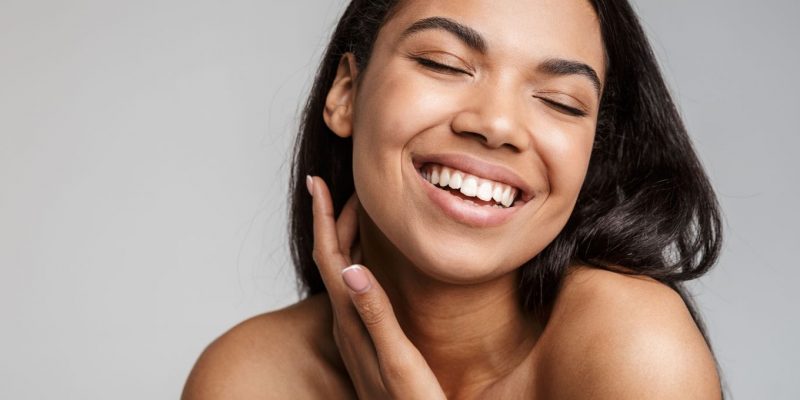
Beauty
ELLE Tried It: Five Serums to Up Your Skincare Game
Members of the ELLE team tested Avène Dermatological Laboratories’ five new concentrated serums. Here's what they thought.
by : ELLE Canada- Apr 25th, 2024

